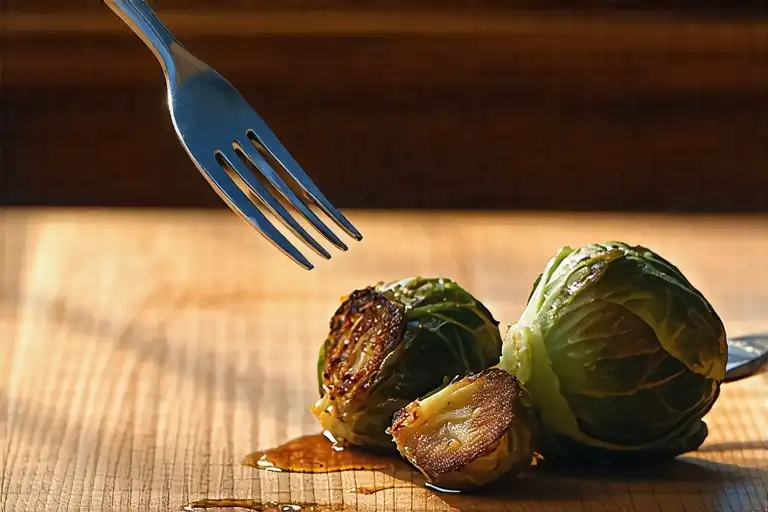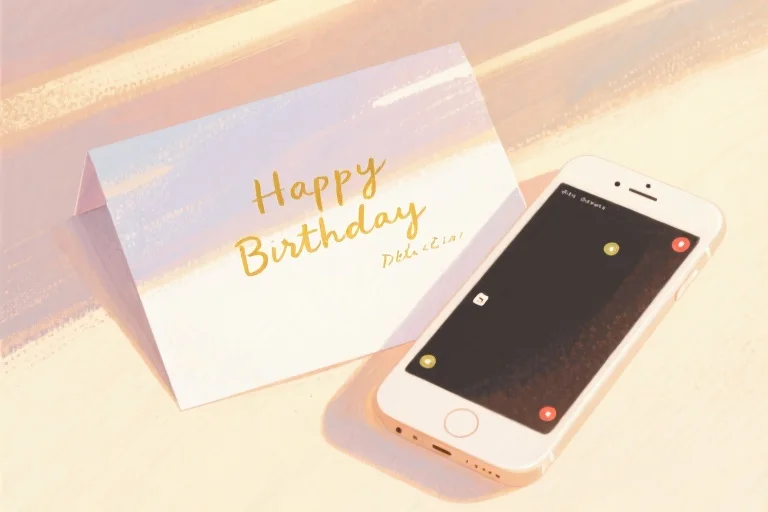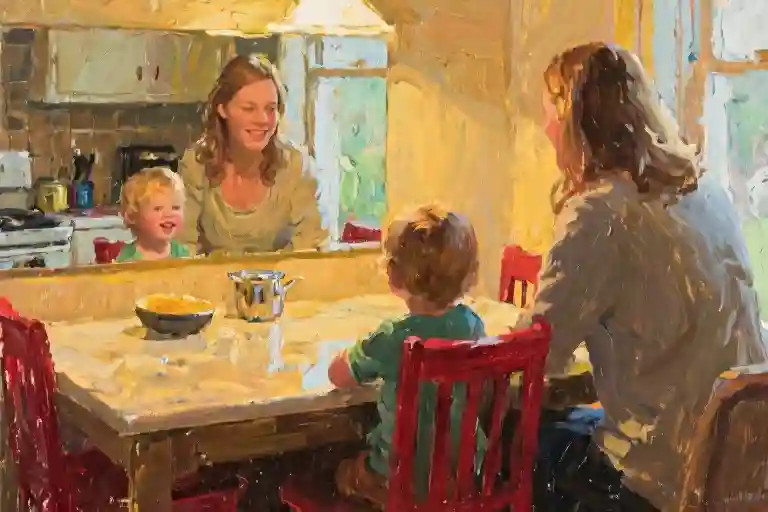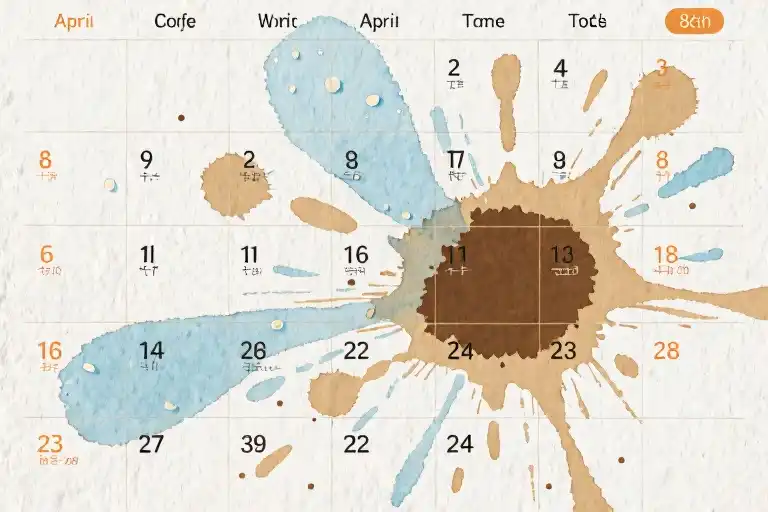The fork hovered mid-air, its tines piercing a single roasted Brussels sprout with surgical precision. Across the dinner table, my daughter Eloise waited – her question still hanging between us like the faint earthy aroma of the vegetables. At fourteen, she had mastered that particular teenage inflection where curiosity blends with challenge, the pitch rising just enough at the end to demand an answer without sounding demanding.
Brussels sprouts. These miniature cabbages we’d learned to enjoy together after years of wrinkled-nose rejection. Their bitterness had become comforting through repetition, much like the difficult conversations we’d been practicing. Tonight’s batch carried caramelized edges from oven roasting, each fold holding pools of olive oil and sea salt – deceptive delicacies masking their inherent sharpness.
Parenting fears often arrive unannounced during such ordinary moments. One second you’re passing the pepper mill, the next you’re navigating existential dread between bites of cruciferous vegetables. My knife sawed absently at the sprout’s stem as memories surfaced: childhood nightmares about coffins, adolescent panic attacks during funeral scenes in movies, that paralyzing moment last spring when I’d stood trembling before the zip-line platform.
Anticipatory anxiety manifests physically – the dry mouth, the prickling neck hairs, the way time distorts. Right now, three separate timelines converged in my hesitation: my past self’s terror of oblivion, my present fear of parental inadequacy, and some future version of this conversation I might regret mishandling. The sprout’s outer leaves separated under my fork with audible crispness, revealing its densely packed core.
Existential anxiety parenting rarely comes with warning labels. We don’t get disclaimers about how answering “what scares you most” changes irrevocably once you’re responsible for someone else’s heartbeat. My thumb rubbed the fork’s handle – stainless steel gone warm from my grip – as I considered how to translate decades of death dread into something nourishing rather than frightening.
Outside our kitchen window, twilight softened the neighborhood into blue-gray layers. Somewhere beyond the glass, other parents were likely fielding similar questions during their family dinners, all of us simultaneously terrified and terrified of showing it. The Brussels sprouts on our plates cooled gradually, their roasted surfaces hardening like little armor-plated fears waiting to be digested.
The Metamorphosis of Fear
The fork hovered mid-air, its tines piercing a single roasted Brussels sprout as my daughter’s question hung between us. At fourteen, my own fears had been simple in their complexity – a morbid fascination with death’s mechanics paired with existential dread. I could still recall the cold sweat from watching forensic documentaries, how my adolescent mind would conjure phantom pains in the dead of night, imagining the cessation of consciousness like a television screen blinking to static.
Four decades later, my fear inventory reads like a parent’s survival guide. Where teenage me trembled at autopsy diagrams, grown-me’s pulse races in pediatric ER waiting rooms. The rearview mirror of our minivan holds more terror than any horror film – one glance at empty booster seats can trigger scenarios of screeching tires and broken glass. This evolution isn’t loss of courage, but love’s cruel arithmetic: our protective instincts expand to cover every inch of our children’s worlds.
Neuroscientists call it the ‘caregiving amygdala override’ – when the brain’s fear center rewires itself to prioritize offspring survival over self-preservation. My childhood nightmares of gravestones have been replaced by 3AM calculations: if I live to eighty, will I see my grandchildren graduate? The mortality equation shifts from ‘How long do I have?’ to ‘How much can I give?’
This fear migration follows predictable developmental stages:
- Egocentric Fears (Adolescence)
- Bodily harm/death
- Social rejection
- Existential meaninglessness
- Relational Fears (Early Adulthood)
- Partner loss
- Career failure
- Financial instability
- Generational Fears (Parenthood)
- Child safety threats
- Legacy anxiety
- Time scarcity
The Brussels sprout finally crunched between my teeth, its bitterness a perfect metaphor – parenting transforms us to swallow life’s sharpest flavors without flinching. Where teenage fears sought avoidance, parental fears demand engagement. That zip-line moment with my eldest last spring proved it: shaking knees and all, I’d choose facing terror over failing to model courage.
This fear evolution isn’t linear but concentric, each new ring of responsibility enclosing the last. My childhood death anxiety didn’t vanish – it simply gained competition. Now when mortality whispers at 2AM, I counter with living calculus: if today were the last, did I love loudly enough? The greatest terror becomes not the end itself, but arriving there with unfinished love.
The Anatomy of a Fear Conversation
Her question hung in the air between us, heavier than the scent of roasted Brussels sprouts. At that moment, I realized parenting gives us two simultaneous fears: the original terror we carry from childhood, and the new dread that comes with loving someone more than ourselves.
When Instinct Fails Us
My first impulse was deflection – that universal parental defense mechanism. I could almost hear myself saying those automatic phrases we fall back on:
- “Don’t talk about such gloomy things” (dismissal)
- “Everyone dies someday” (generalization)
- “Let’s focus on happy thoughts” (avoidance)
These responses aren’t just unhelpful; they’re developmental roadblocks. When we shut down conversations about fear, we implicitly teach children that:
- Strong emotions are dangerous
- Vulnerability equals weakness
- Some questions have no answers
Rewriting the Script
The breakthrough came when I stopped seeing this as a test I might fail, and started viewing it as a shared exploration. Here’s how the conversation could flow differently:
Child: "Will you die someday?"
Parent: "All living things do, but what scares me more than dying is..."
[Pause to gauge readiness]
"...not having enough time to teach you all the recipes for life."This approach works because it:
- Validates the question’s importance
- Models emotional honesty
- Transforms fear into purpose
The Fear Thermometer
Children need concrete ways to process abstract anxieties. We developed a tactile method using everyday experiences:
| Fear Level | Physical Equivalent | Coping Strategy |
|---|---|---|
| 1-3 (Mild) | Forgetting homework | Deep breaths |
| 4-6 (Medium) | First rollercoaster | Hand-holding |
| 7-10 (Severe) | Midnight thunderstorm | Story reframing |
Last week, Eloise rated her “first sleepover” fear as a 5 – “like when you make me try new vegetables.” That tangible comparison gave us common ground to strategize.
From Avoidance to Engagement
The shift happens when we stop seeing these conversations as problems to solve and start recognizing them as:
- Trust barometers
- Emotional literacy builders
- Intergenerational healing opportunities
That plate of Brussels sprouts became our laboratory – each bitter bite a reminder that difficult conversations, like cruciferous vegetables, contain nutrients we can’t get anywhere else.
The Alchemy of Fear: Transforming Parental Anxiety into Connection
The fork hovered mid-air, spearing a caramelized Brussels sprout that suddenly felt heavier than its two-ounce weight. My daughter’s question about my greatest fear lingered between us like the vegetable’s earthy aroma – simultaneously familiar and unsettling. This moment called for more than a pat answer; it demanded tools to transmute raw fear into something nourishing.
Exercise 1: Sketching Your Fear Creature
Every parent knows how fears morph in the dark corners of midnight thoughts. Give yours tangible form with this visualization:
- Morphology: Does your fear have spindly limbs like ICU monitors? Blank eyes like unread text notifications? Sketch its silhouette in the margin of a grocery list.
- Behavior Patterns: Notice when it’s most active. My “Failure Gremlin” gnaws loudest during parent-teacher conferences, its claws tapping against my collar bones in rhythm with “what if” questions.
- Vulnerabilities: Discover its kryptonite. For separation anxiety, I created a “Love Compass” – a doodle showing all the invisible threads connecting me to my children regardless of distance.
Parenting pro tip: Make this a shared activity. When my son drew his “Test-Day Tarantula”, we worked together to shrink it into a harmless rubber spider he could keep in his pencil case.
Exercise 2: The Fear Reduction Recipe
Transform overwhelming dread into manageable ingredients:
| Raw Fear | Simmering Thought | Seasoning | Served As |
|---|---|---|---|
| “I’ll fail them” | “I have survived 100% of my worst days” | Gratitude journal | Empowerment tapas |
| “The world’s dangers” | “Pain is inevitable, suffering is optional” | Mindfulness sprinkles | Bite-sized wisdom |
| “They’ll stop needing me” | “Attachment evolves but doesn’t vanish” | Memory rosemary | Comfort stew |
Last winter, I created a “Blizzard Worry Soup” with my kids – writing fears on vegetable-shaped paper to stir into imaginary broth. The act of physically “cooking down” anxieties made them less viscous.
Exercise 3: Rewriting Fear’s Finale
Our brains default to horror scripts when imagining worst-case scenarios. Try drafting alternative endings:
- The Documentary Version: Just facts. “The school called about a fever. I picked her up at 11:37 AM.”
- **The Comedy Special”: “Of course the one time I forget the pediatrician’s number, my phone autocorrects ‘fever’ to ‘ferret’.”
- The Hero’s Journey: “That hospital stay became the origin story for her nursing career.”
When my daughter developed night terrors, we co-authored “The Monster Manual” – giving each fear a ridiculous weakness (“The Shadow Lurker collapses if you hum the Baby Shark theme”). Within weeks, she was designing fears to defeat.
These alchemical exercises don’t erase parental fears – that would be like expecting Brussels sprouts to taste like chocolate. But they help metabolize anxiety into connection points. That night at dinner, I finally answered my daughter: “My biggest fear is missing the chance to face fears together.” And just like roasted sprouts, some truths are bitter and sweet in the same bite.
The Brussels Sprouts Revelation: Fear as Cultural Alchemy
The roasted Brussels sprouts on my plate suddenly became more than just vegetables – they transformed into tiny globes containing centuries of human wisdom about fear. As I hesitated to answer my daughter’s question, it struck me how differently cultures approach our deepest anxieties, much like how cuisines transform this polarizing vegetable.
Nordic Roasting: Fear as Energy to Harness
In Scandinavian traditions, Brussels sprouts are roasted until their edges caramelize, turning bitterness into complex sweetness. Similarly, Nordic cultures view fear not as something to eliminate, but as primal energy to channel. The Swedish concept of “lagom” teaches balanced acceptance – not too much fear, not too little. Like Vikings preparing for winter, parents can use anticipatory anxiety to practically prepare while avoiding paralysis. My Norwegian friend once told me, “We don’t say ‘don’t be afraid,’ we say ‘be afraid wisely.'” This mirrors how Nordic parenting encourages children to engage with controlled risks – climbing trees in all weather, learning to handle knives early – transforming fear into competence.
Asian Stir-Fry: Fear as Life’s Seasoning
When my Chinese neighbor prepares sprouts, they’re flash-fried with garlic and chili, their sharpness becoming just one flavor note in vibrant harmony. Eastern philosophies often treat fear like this – not the main dish, but a necessary spice. The Japanese concept of “mono no aware” beautifully captures this – the bittersweet awareness of life’s impermanence that actually deepens appreciation. I’ve watched Korean mothers teach children to sit with discomfort through jjimjilbang heat therapy, while Thai parents use ghost stories to build psychological resilience. Like fish sauce that smells strong but enhances umami, these cultures show how facing fears can unexpectedly enrich parenting.
Latin Fermentation: Fear as Transformative Agent
At our local Mexican restaurant, sprouts are pickled with habaneros and lime – their texture completely transformed through acidic alchemy. Similarly, Día de los Muertos celebrations demonstrate how Latin cultures let fear ferment into celebration. My Guatemalan babysitter once explained, “We don’t hide death from children – we dress skeletons in grandma’s clothes and give them candy.” This cultural reframing offers profound lessons for parental fears. When we allow our anxieties to “marinate” openly with children – through art, stories, and rituals – they often transform into connection points rather than terrors.
As I finally answered my daughter (“I fear not being there when you need me, but that’s why we make today count”), I realized these cultural approaches aren’t mutually exclusive. Like the global journey of Brussels sprouts from European fields to fusion menus, our parenting can blend these wisdom traditions. Maybe the healthiest approach is to sometimes roast our fears into submission, sometimes stir-fry them into perspective, and occasionally let them pickle into something unexpectedly beautiful – all while keeping the conversation as nourishing as shared meal.
The Fork Finally Falls
The roasted Brussels sprout impaled on my fork hovered mid-air for what felt like an eternity. Eloise’s expectant gaze held me suspended between childhood terrors and parental fears. That simple dinner question had become an unexpected portal – one I now stepped through with careful intention.
“My greatest fear?” I let the fork descend slowly, the caramelized sprout leaving a tiny grease mark on my plate. “It’s not getting to see you face your own fears.”
Her nose wrinkled in that adorable way it does when she’s processing complex thoughts. “But you see me scared all the time! Like when I thought there were monsters under my bed last week.”
“Exactly.” I reached across to brush a crumb from her cheek. “Those moments when you tremble but try anyway – that’s when I see you becoming you. My fear isn’t about monsters or heights or…” My throat tightened slightly. “Or even death. It’s about missing the privilege of witnessing your courage take shape.”
We both looked down at our plates simultaneously. The balsamic reduction had pooled into an accidental electrocardiogram pattern around our remaining sprouts – peaks and valleys mirroring life’s rhythm of fears confronted and overcome.
“So,” Eloise said thoughtfully, spearing the last sprout with sudden determination, “if I eat this yucky vegetable, does that count as being brave?”
Laughter bubbled up like relief. “Absolutely. And tomorrow we’ll tackle broccoli.”
As we cleared the dishes, I realized the conversation had accomplished what the best parenting moments do – it honored the question behind her question. She wasn’t really asking about my fears; she was testing whether her own fears had space to exist between us. That plate of sprouts became our neutral ground where difficult truths could be served alongside ordinary Tuesday night dinner.
The fork had fallen. The fear had been named. And somehow – through the alchemy of honesty and humor – we’d both taken a bite of something nourishing that neither of us expected to swallow so easily.





